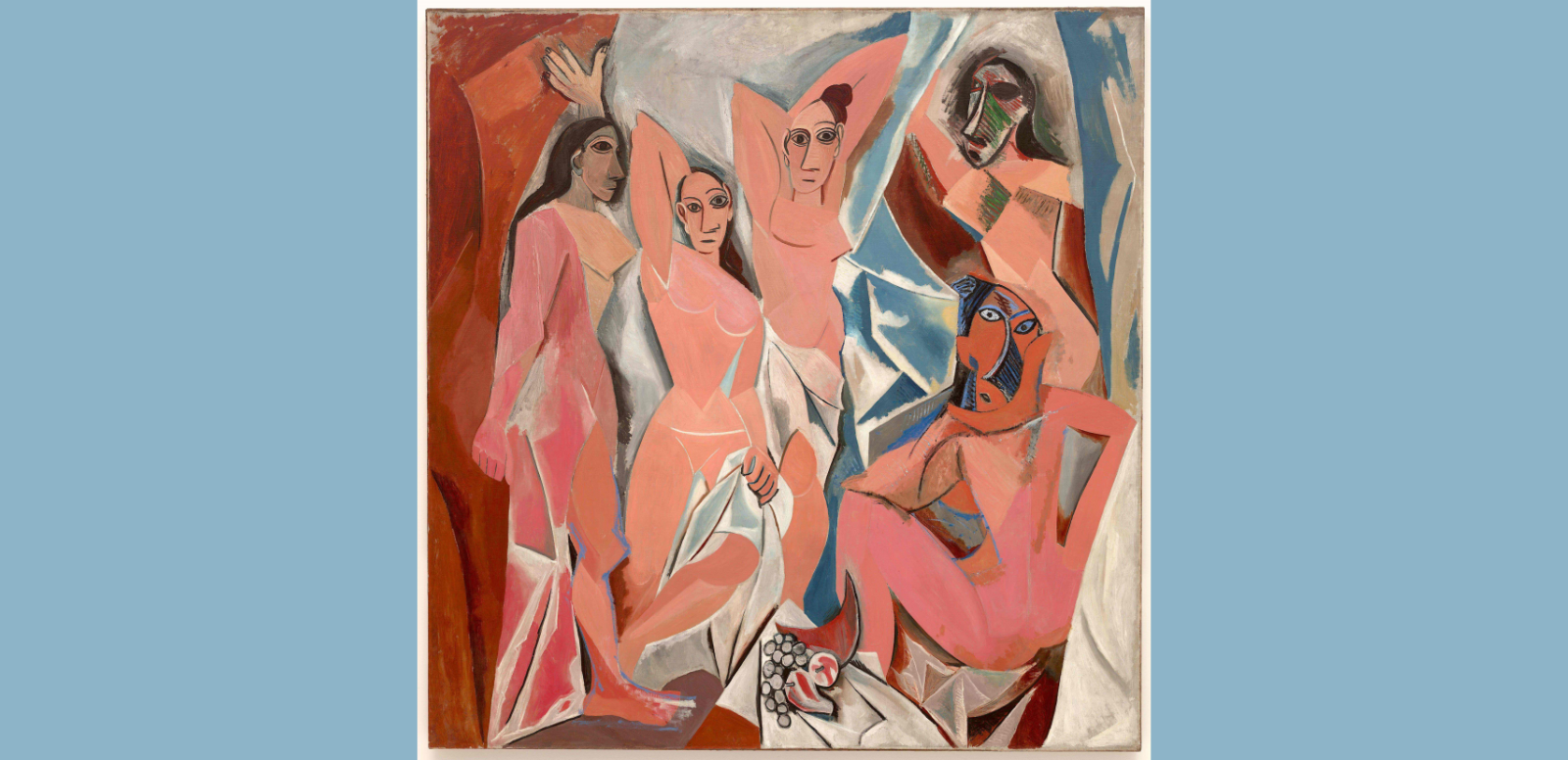
© Sucesión Picasso, VEGAP, Madrid, 2023.
Les Demoiselles d'Avignon is one of Picasso's most iconic works and is considered one of the most influential and innovative paintings in the history of modern art. It was painted in 1907 and depicts five naked women in a brothel in the rue d'Avignon in Barcelona.
In Les Demoiselles d'Avignon, Picasso broke the conventional norms of pictorial representation, deforming the women's forms and bodies and creating a sense of fragmentation and dislocation. The painting is a reflection of the bohemian atmosphere of Barcelona at the beginning of the 20th century and the artists' interest in marginal subjects and subculture. Picasso had a great interest in African and Iberian art, and this is reflected in the work, in which the distorted forms of the women's bodies resemble African masks.
At the time the work was criticised by several artists and collectors such as Matisse, Braque, Leo Stein and the dealers Kahnweiler and Uhde, who did not immediately understand the sense of the new path Picasso had embarked on. Matisse called the work an outrage and an attempt to ridicule the modern movement.
Nevertheless, Les Demoiselles d'Avignon is a work of great importance and has had an enormous influence on the evolution of modern art. The painting marked the beginning of a new way of understanding art, known as Cubism, characterised by the fragmentation and decomposition of forms. Picasso's break with the traditional representation of the human body in Les Demoiselles d'Avignon became a constant in his later works. Through his experiments in Cubism, Picasso explored new forms of representation. This led him to create some of the most influential works of the 20th century, such as Guernica.
As for the meaning of the work, various interpretations have been proposed over the years. The most popular is that it represents a critique of prostitution and the treatment of women in the brothels of the time. The tense posture of the women and the lack of eye contact between them suggests a tension and unease that could be interpreted as social criticism. However, others have interpreted the work as an exploration of sexuality and femininity.
In short, the work is considered a milestone in the history of art and one of the most important works of the 20th century. Les Demoiselles d'Avignon has had a lasting influence on the art world and on the work of Picasso in particular, who continued to explore the possibilities of Cubism and became one of its leading exponents. This painting revolutionised the way in which art was understood and opened up new possibilities for experimentation and innovation in painting
Sources:
Esteban, Paloma (introduction), The great geniuses of contemporary art. No. 1. The 20th century. Picasso 1881-1914, 2004
The Museum of Modern Art (MoMA) New York: https://www.moma.org/collection/works/79766
Translated with www.DeepL.com/Translator (free version)

